The Excavation of Hob's Barrow on Linux: Review
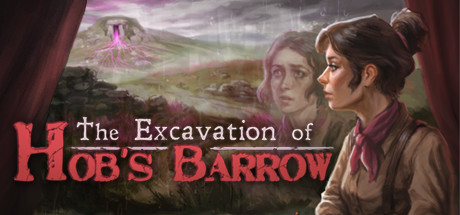
Today I got the opportunity to review The Excavation of Hob’s Barrow, a point and click folk horror story set in Victorian England that runs well on Linux. Besides the steam description and being on some friend’s wishlist I didn’t know much about. A web search led me to its former name Incantamentum, but I decided to postpone my investigation to not spoil the fun.
And, oh boy, I was ready for some nostalgia. Some of the first games I played on PC were point and click adventures. In a time when I didn’t know English well and would proceed the story with guesses and trial and error. It taught me give, pick up, look at and many others just by figuring out what the character would do at each command.
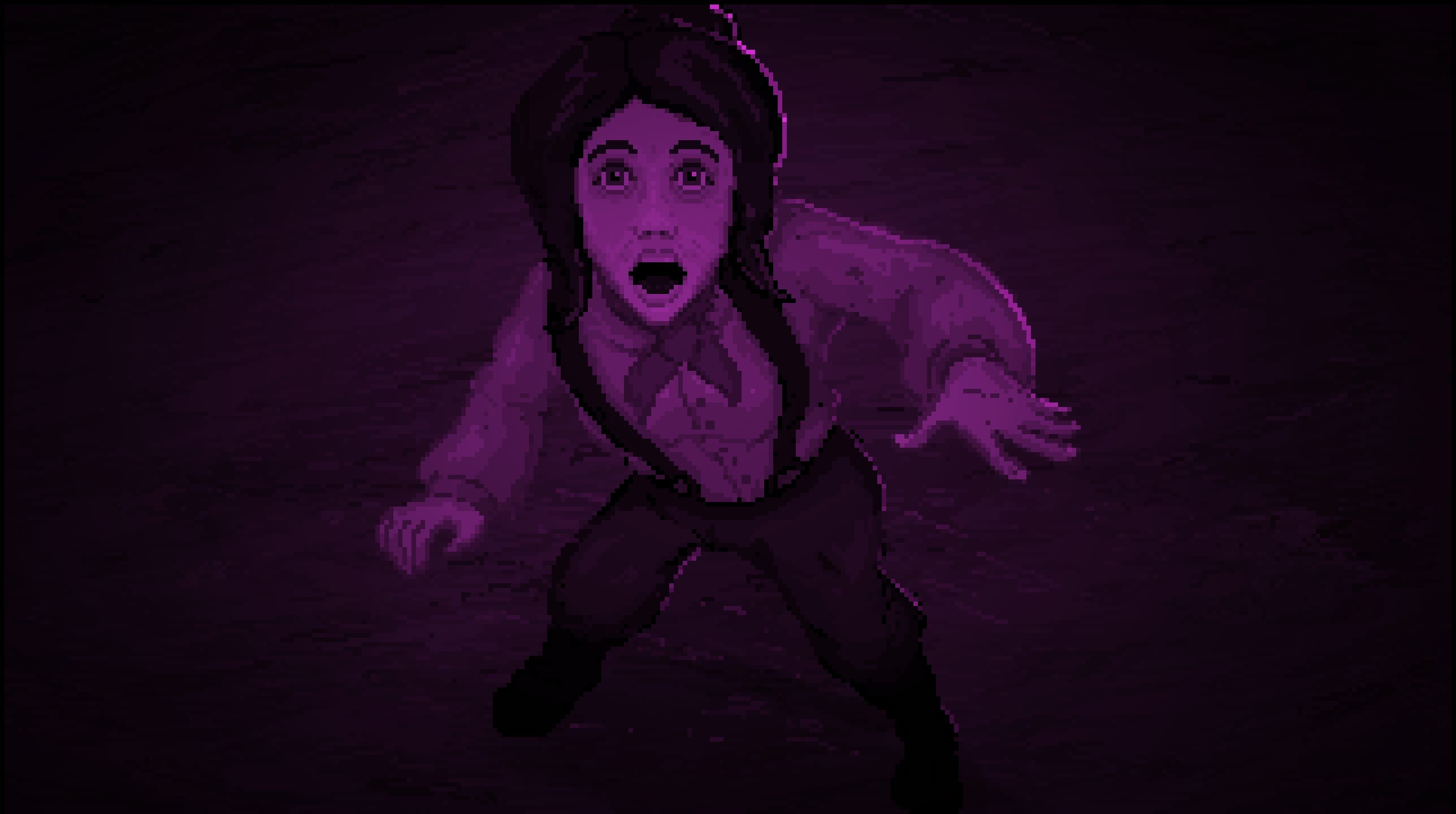
But I also had my fears. Point & Click adventure is a genre extremely difficult to make. You need to be able to tell your stories with a flow of challenges and adversity, without making them boring and meaningless. Will this game keep me engaged with gameplay, or it will be a book that I unlock the next pages by delivering the next key?
Let’s press play.
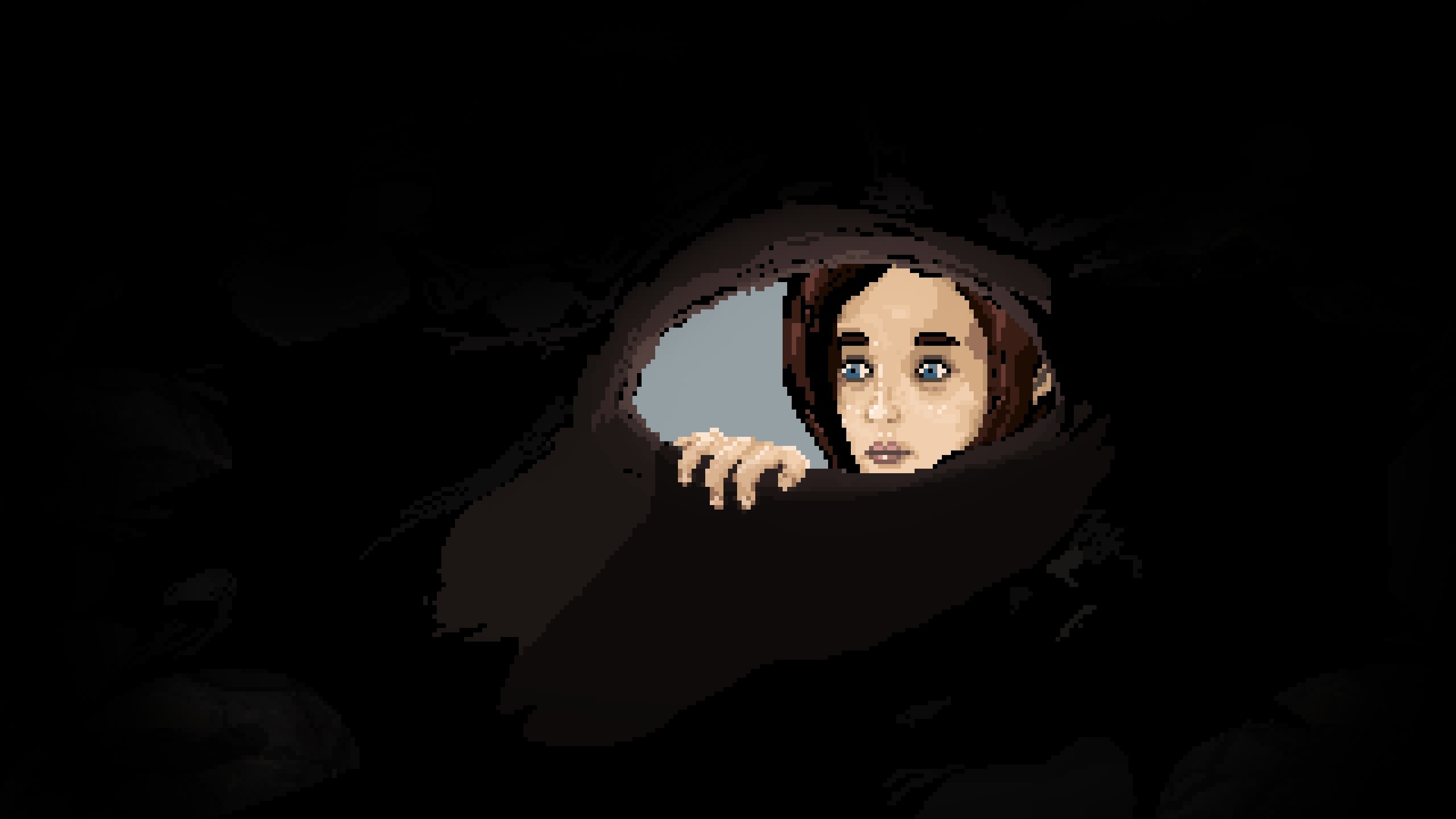
You control Thomasina, an antiquarian that specializes in digging barrows, man made mound of stones and dirt often as burial grounds, soon to release a book about her discoveries. You are invited to dig the next entry for your book, the Hob’s barrow, located in a remote small village in the countryside of England. There you will find people who want you to dig, people that don’t want you to dig, people that may or may not want you to dig or are just indifferent, and it is up to you to figure out how to progress while discovering much about this village history and unveiling the whole story of the game.
The mechanics are straightforward. You click on things (point and click part) to interact with them: Talk to someone, pick an object, combine an object with another, give the object to someone else, select a dialog, look at things, and so on so forth. If you get lost, you can use SPACE to highlight things you can interact. By playing you will find dialogs and objects that when they satisfy a condition, you move forward with the story.
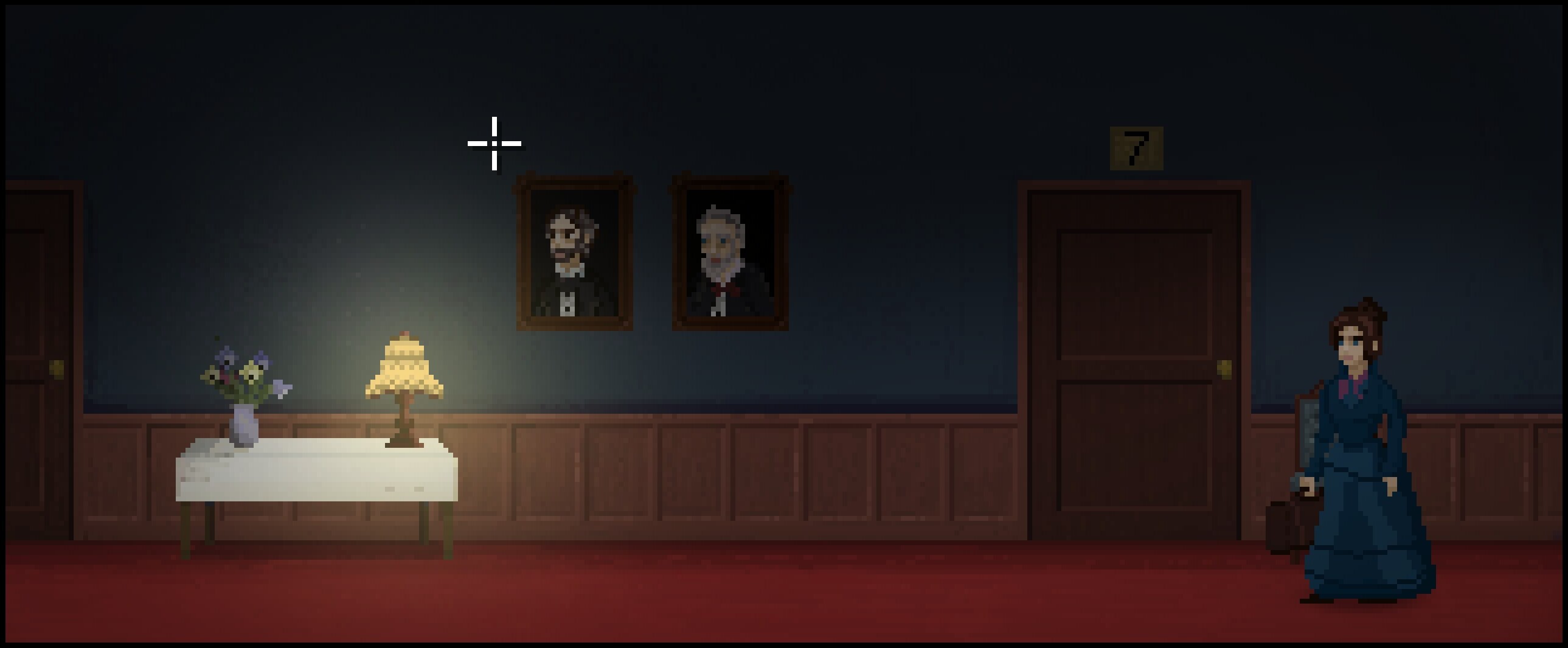
| Game Design Element | Description (spoiler free) |
|---|---|
| Objective | To dig a barrow in a rural Victorian England village |
| Challenges | Not everyone in the city wants you to dig, so you need to fetch items and solve puzzles to win their support |
| Mechanics | Point & Click, fetch items, combine items, bring to where they are needed, explore dialogs, read documents, look at items, move through parts of the village, interact with puzzles |
I was impressed that all the dialogs were dubbed, you can feel the emotions she is going through during the narration, there is some difference between Thomasina and the villagers’ speech, and you can get an insight of their intent at some points.
The art and animation is thorough, from the stones of a wall to the critters moving in the scene. Different weathers animated through the story. And they convey emotions quite well in the cutscenes with some smart framing.
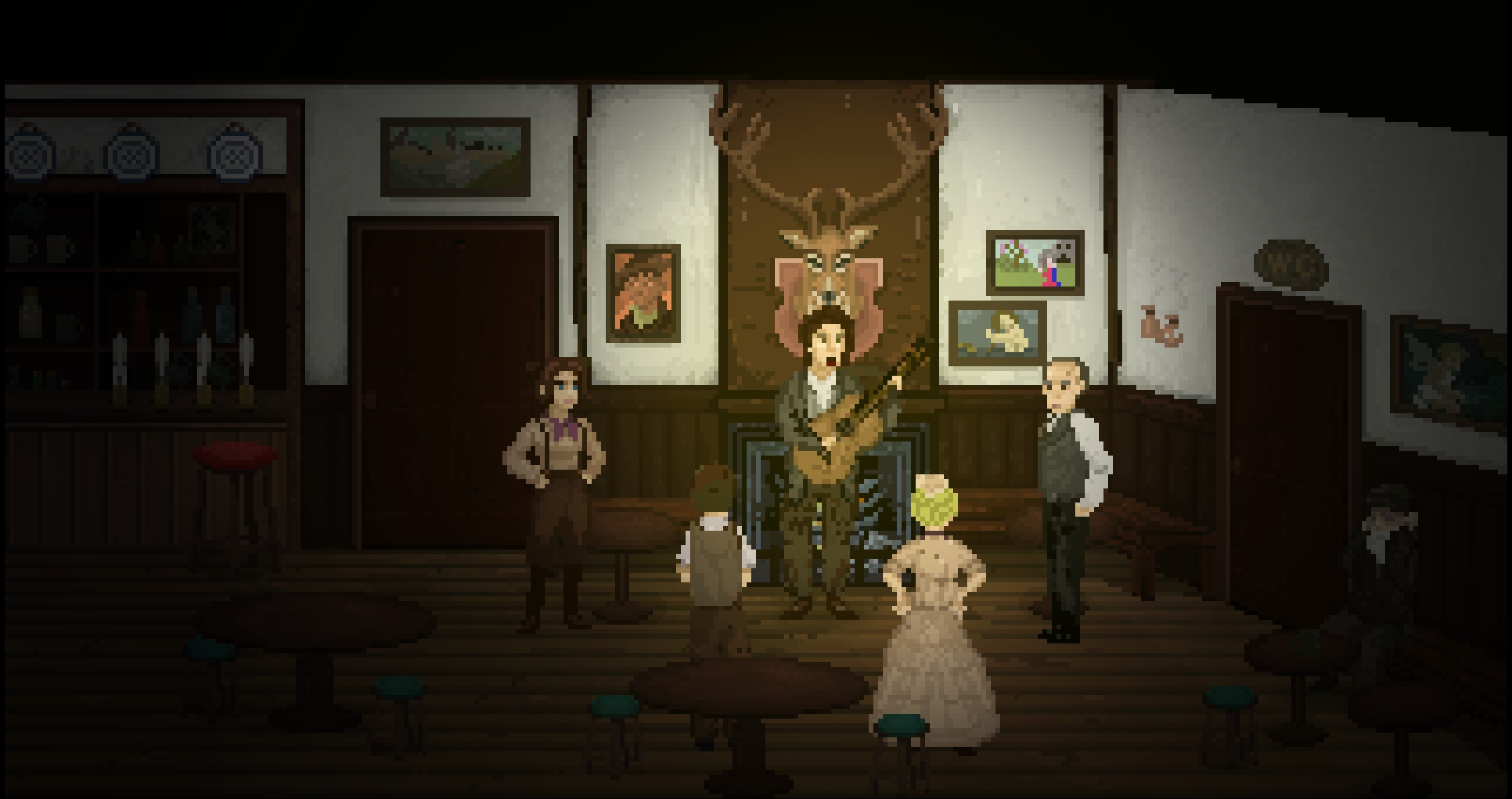
The music hits its mark to match the emotion of what is happening, there are some good sound effect with rain, footsteps and board floor creeks. But besides the first time I saw an animal, there were no footsteps, bush rattling or animal noises the next time, they just crossed the scene silently. ometimes during my playthrought, there was this pause in the middle of a dialog and I thought it was the game freezing because nothing would move, but I guess it was just people “thinking” before their next phrase, it would be nice to have some effects to break the silence.
I also admired the work put on the writing, they wrote a lot. Apart from everything you hear from narration and dialogs, there are letters, books and the things your character say when you try to do something stupid. The beginning comes out strong, with the introduction of new people you get a feel that they have some depth, but then…
I was felling bored, and the curiosity of what comes next was not enough to keep me going.
The game lacks on gameplay, mechanics that keeps me engaged and help tell the story while I interact with them.
The mechanics starts simple, you talk to people, and sometimes someone needs an item, and you fetch it to them to progress the story. “Oh, you need my help to progress, well, please bring me a [insert item name here]”(to not spoil the game, let’s say it is a Penguin), sometimes they don’t tell you, you see a situation you figure out what would help it progress, and you use your intuition in that situation. I like the later better, maybe because I used to play this kind of game without knowing much of English, while making up the story in my head.

The game progress similar, you talk to people, unlock dialogs with more people, talk to someone else, get a fetch quest. They just increase the number of tasks you need to do to get the Penguin. “You want my Penguin? I give it to you if you bring me a Linux Live USB”, Now you need to fetch a UBS, download a Linux Distro and combine them. But to download the distro you have to stay in line with your ISP for 2 hours to fix your internet…
Fetch quest after fetch quest to progress the story. You find, then bring the key to open the next part.
=====> 🔑 =====> 🚪 =====> 🔑=====> 🚪 =====> 🔑 =====> 🚪
It was not until the last stretch of the game that you are hit with some good puzzles, but by then you have plenty of cheat sheet around you to solve them, you just need to follow it.
Don’t get me wrong, there were some fetch quests that helped tell the story, why this person is giving me such an easy task as a condition to help me dig the barrow, or if you know a character cultural inclinations, you will find the item faster than with trial and error. And there was a clever puzzle without side wheels and a rather intuitive design that felt great solving. But most of it was given to you without any adversity.
That is what makes it so hard to build a good point & click adventure game. You have to not only create plenty of intuitive puzzles that help tell your story, but also chain them together nicely to keep the flow of the game.

My curiosity dwindled by the middle of the game, you have a general idea of the brilliant end, and you get that expectation on how you will connect with it. But this connection never comes, you just progress the story without any motivation. There is a dissonance between your actions and what is happening. Like stealing something costing less than the beers you have been drinking so far, and people are providing you with more than you need. The Sisyphean fetch quests seems unrelated to the story, like fillers, doesn’t help it either.
Overall, the music and art went hand in hand to set the mood, but in the end, what makes games different from other media is the gameplay. Games add the interactivity, and sadly this was not enough to keep me engaged.
The Linux experience
Before we say our farewells, some technical Aspects. It runs great on Linux, natively, while playing I haven’t had a problem (safe for a door I was expecting a sound but had none, maybe it was supposed to have none). The settings allow you to control volumes individually(SFX, dialog, music), enable subtitles, options to skip dialogs (great for speed run), colourblind mode and something that I really enjoy: the devs’ commentary. On the negative side, there was no option to change the scale or resolution of the windowed mode, there is no option to rebind keys and there was a weird mouse deceleration going on.
Technical Aspects
| + Positives | - Negatives |
|---|---|
| Runs great on Linux | Windowed mode can’t change resolution |
| Individual volume control (SFX, dialog, music) | No Key Rebinding |
| Enable subtitles | Weird Mouse deceleration |
| Options to skip dialogs | |
| Colourblind mode | |
| Dev’s commentary |
¹barrows of England: I learned about this recently with the movie The Dig(2021).
Be excellent to each other!
Cheers,
Nils
